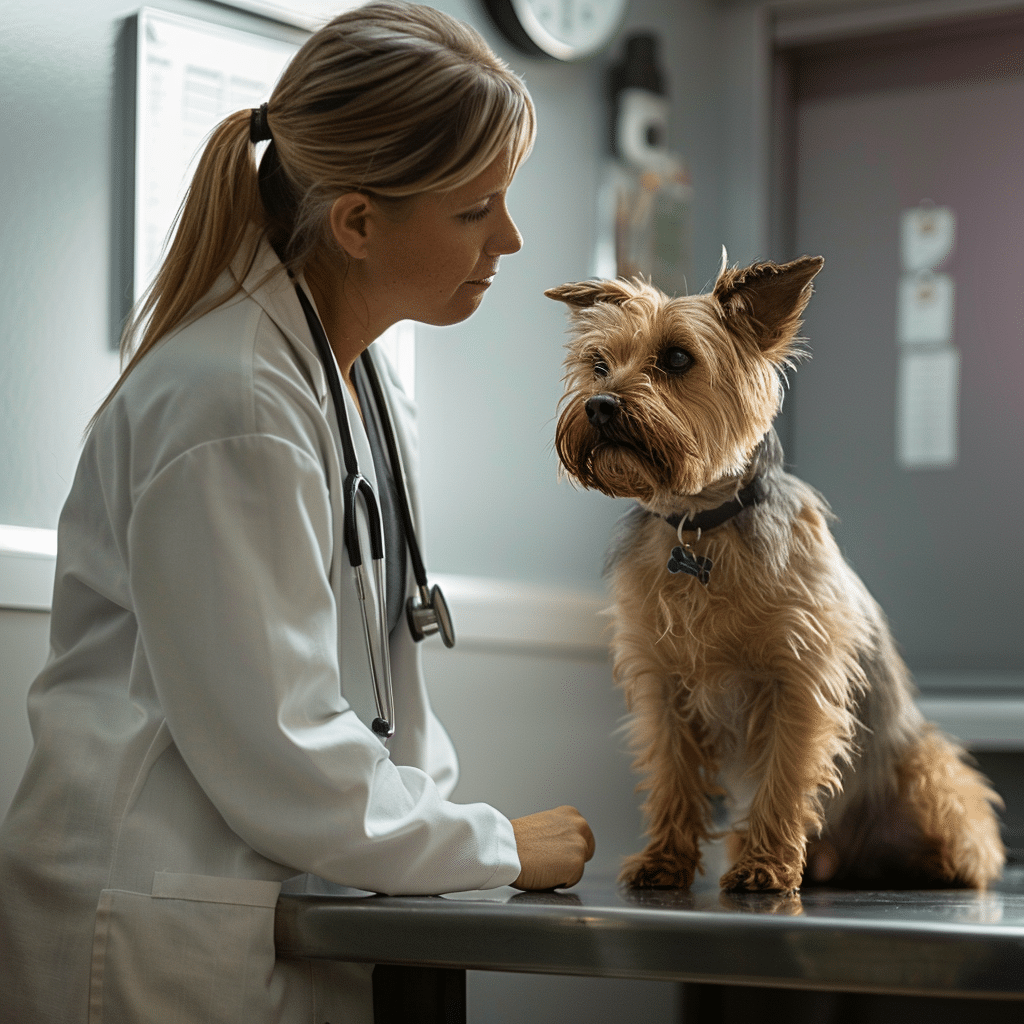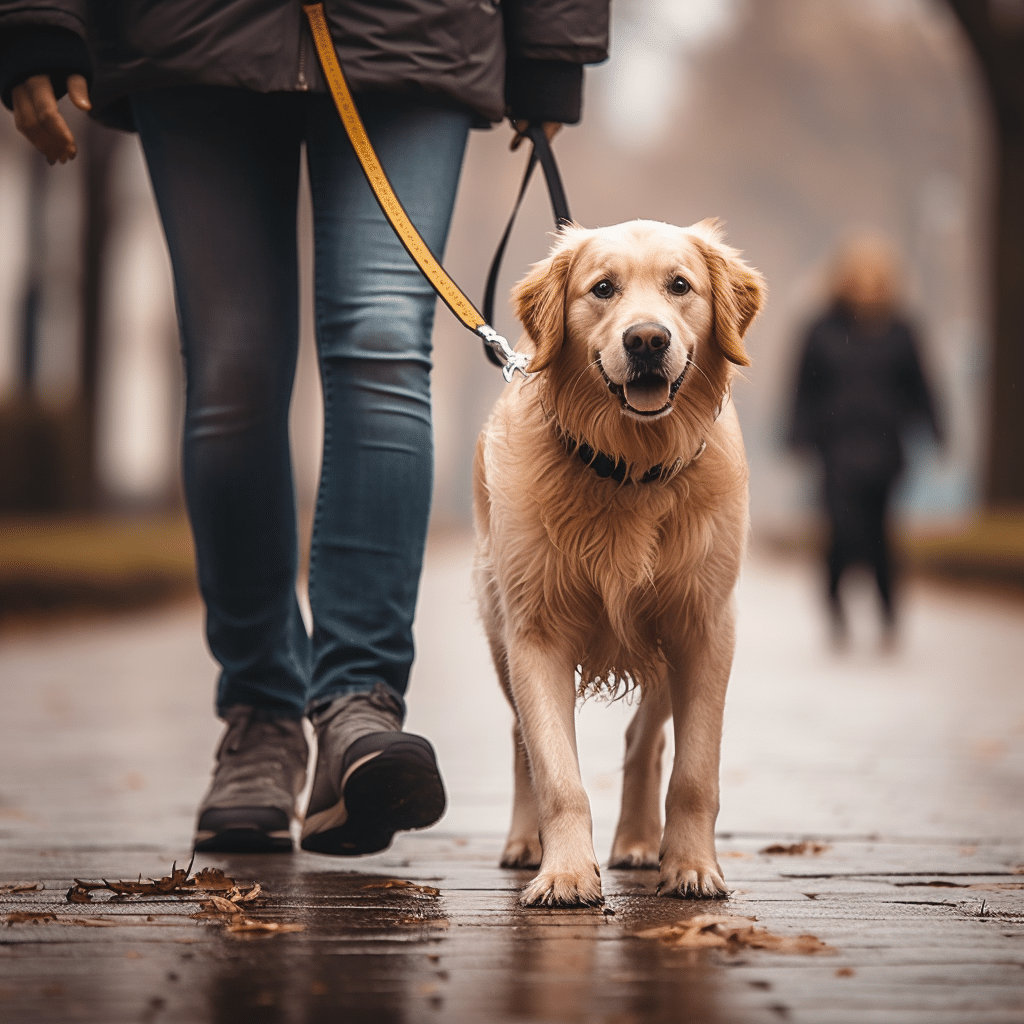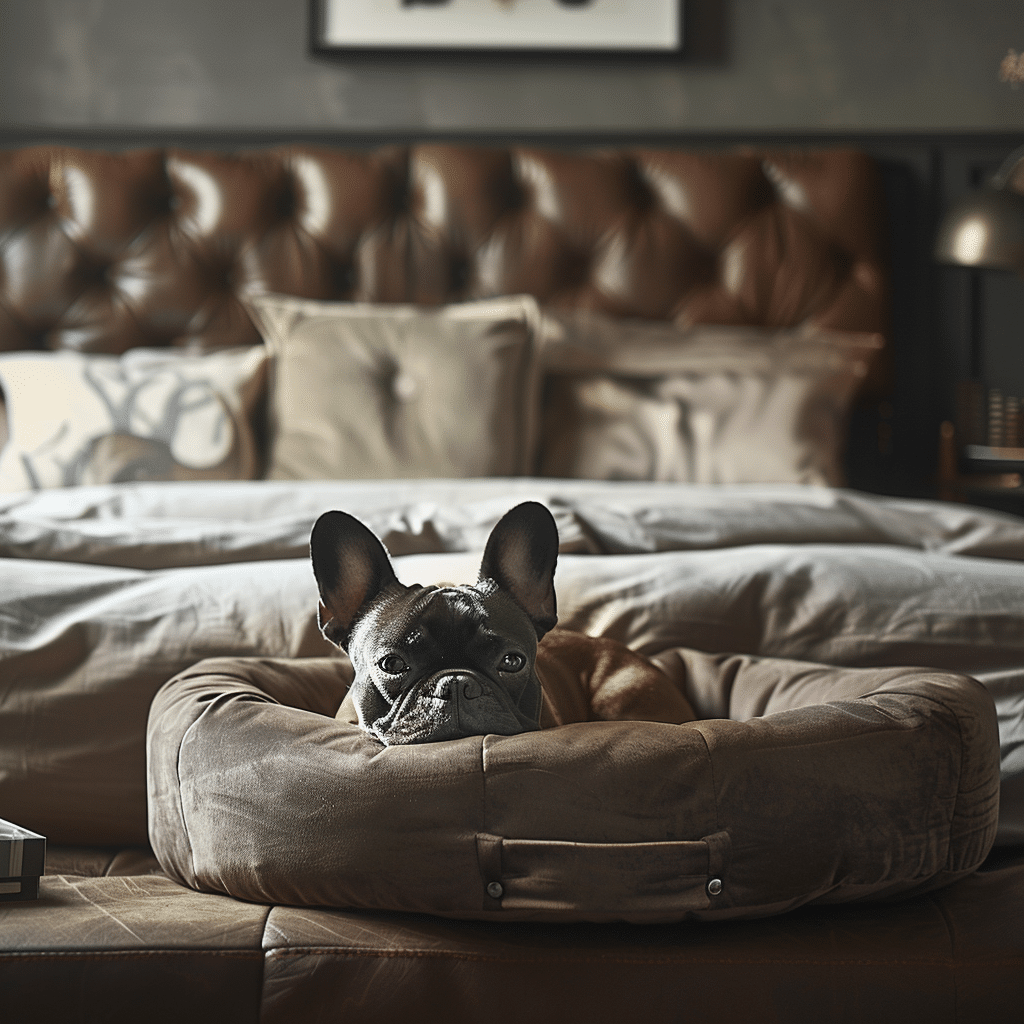New Year’s Resolutions for Your Dog: Simple Goals for a Happier, Healthier Companion
A new year is the perfect time for a fresh start—not just for you, but for your furry friend too. Setting resolutions for your dog can boost their health, happiness, and overall well-being.
From improving their diet to creating a playtime routine, small changes can make a big difference. Want more insight into keeping your senior pup healthy year-round?
Check out this comprehensive guide to senior dog health. Let’s help your pet thrive, one goal at a time.
Setting Realistic Goals for Your Pet

It’s easy to get excited about making big changes, but when it comes to your pet, realistic goals are key. Taking your pet’s unique needs into account ensures their resolutions are not only achievable but also genuinely beneficial.
These steps can help you set meaningful goals that keep your pet happy and healthy year-round.
Assessing Your Pet’s Needs
Every pet is unique, and understanding their specific needs is the first step to setting effective goals. Start by asking yourself: Does my pet need more exercise, a healthier diet, or mental stimulation?
For example, some dogs thrive on long walks, while others may need more interactive toys to keep their minds engaged.
Here are a few tips to help you evaluate their needs:
- Watch their behavior. Are they restless or overly tired? These signs may indicate physical or mental needs.
- Track their habits. Paying attention to eating, sleeping, and play patterns can reveal areas for improvement.
- Consult professionals. Vets or trainers can offer insight into your pet’s overall well-being and specific needs.
Pro tip: Stay observant! Your pet’s body language often communicates what they’re missing or craving.
Incorporating Vet Visits
Regular vet check-ups aren’t just for when your pet is sick—they’re an essential part of preventative care. Including these visits in your New Year’s goals ensures any underlying health issues are caught early.
Think of it like routine car maintenance but for your furry friend.
During these visits, your veterinarian can:
- Perform wellness exams to detect problems early.
- Discuss dietary adjustments to support your pet’s specific needs.
- Provide vaccinations and parasite prevention suited to your environment.
You can also explore specialty care during these visits. For example, dental health check-ups can prevent more serious complications down the road. Learn more about the importance of dental health in pets.
Considering Age and Breed Specifics
Pets of different breeds, ages, and sizes often have varying needs. A goal that’s perfect for a senior Poodle might not make sense for an active Labrador puppy.
Tailoring resolutions to your pet’s unique characteristics ensures they’re practical and beneficial.
Here’s how to factor in age and breed:
- Age considerations: Puppies require extensive training and energy outlets, while senior pets might need gentler exercise routines and joint care.
- Breed needs: Larger breeds may have different dietary or activity requirements than smaller ones. For instance, a Border Collie will need more mental stimulation than a Bulldog.
Adjust your plan as your pet grows or changes. Their needs evolve, and your goals should follow suit to keep them feeling their best. For ideas on keeping senior dogs engaged and fit, check out this post on senior dog fitness.
By setting goals tied closely to your pet’s individual needs, you’re setting them up for success this year. When the goals are achievable, both you and your pet will enjoy the process of growth with less stress and more satisfaction.
Health and Wellness Resolutions

Helping your pet live their healthiest life starts with simple, actionable resolutions. From boosting their nutrition to keeping them mentally sharp, these changes ensure a happy and balanced companion.
Improving Diet and Nutrition
A nutritious diet fuels your pet’s energy and longevity. Start the year by focusing on their meal plan. Is it meeting their health needs?
Consider incorporating natural and high-quality options while avoiding processed fillers.
Here are a few ideas to enhance their diet:
- Switch to high-quality food. Look for brands with natural ingredients and avoid artificial additives.
- Add fresh ingredients. Dogs and cats can enjoy safe fruits and vegetables like carrots or blueberries. I add chicken to my dog’s food everyday.
- Discuss supplements with your vet. Joint supplements or omega fatty acids may benefit your pet’s age or breed. I add two probiotics, fish oil and Cosequin to my dog’s food every day.
For dogs with specific health considerations, check out this helpful guide on keeping your dog’s heart healthy.
Regular Exercise
Like us, pets thrive with consistent physical activity. A steady exercise routine improves their physical health and prevents obesity. Begin with small, attainable goals tailored to your dog or cat’s size, breed, and age.
Here’s how you can keep your pet active:
- Walk your dog daily for at least 20–30 minutes.
- Try interactive toys like laser pointers or feather wands for cats.
- Play fetch, tug-of-war, or even try agility training for added fun.
Need ideas to keep things exciting? Explore these fun exercises to do with your dog.
Mental Stimulation Activities
Physical activity isn’t the only need—your pet’s brain needs a workout, too! Mental stimulation keeps your furry friend happy and prevents boredom-related behaviors like chewing or scratching.
Try these engaging activities:
- Interactive toys. Puzzle toys or treat-dispensing gadgets are both fun and challenging.
- Training sessions. Teach them new tricks to boost focus while deepening your bond.
- Scent games. Hide treats around the house and let them use their nose to find them.
Training and Behavior Goals

Start the new year with a fresh focus on your pet’s training and behavior. Effective training not only improves your pet’s manners but also strengthens your bond. Tackling behavioral challenges can create a more harmonious home for both you and your furry friend.
Basic Obedience Training
Obedience is the foundation of good behavior. Teaching basic commands like sit, stay, and leave it ensures safety and improves everyday interactions. It’s never too late to start!
Here’s how to get started:
- Keep sessions short. Begin with 5-10 minutes a day to hold their attention.
- Use positive reinforcement. Reward with treats, praise, or a favorite toy when they succeed.
- Be consistent. Use the same cues and hand gestures every time.
Remember, patience is key. Celebrate little wins along the way!
Socialization Skills
A well-socialized pet is happier and more confident. From puppyhood to adulthood, socialization is a lifelong process. But don’t worry—it’s also a lot of fun!
Tips for improving social skills:
- Introduce new experiences slowly. Start with quiet settings and gradually move to more complicated situations.
- Meet other pets and people. Arrange safe playdates with friendly dogs or introduce them to new faces.
- Stay calm. Your pet mirrors your emotions, so remain relaxed during interactions.
This process builds trust and helps prevent fear or aggression toward unfamiliar animals or people.
Reducing Bad Habits
Does your pet have some behaviors you’d like to tweak? Whether it’s barking, chewing, or jumping, every behavior has a reason. Understanding the “why” is the first step to change.
Try these behavior-adjustment tips:
- Redirect their energy. Provide toys or puzzles to curb destructive behaviors.
- Reward desired actions. Focus on what they’re doing right to encourage good habits.
- Set boundaries. Use baby gates or leashes to maintain a controlled environment.
Investing in training and behavioral goals this year will lead to a happier, more balanced companion. As the saying goes, a well-trained pet is a happy pet. Keep it fun, consistent, and reward-driven!
Creating Quality Time Together

Making space for quality moments with your pet strengthens your bond and improves their overall well-being. Whether you’re scheduling regular activities or embarking on new adventures, shared experiences enrich your lives and bring plenty of joy.
Daily Playtime Routines
Consistent playtime is vital for your pet’s physical and mental health. It’s also a fun way to release built-up energy. Plus, those 15-20 minutes of play can create some of the happiest moments of their day—and yours too.
Here’s how you can make daily playtime enjoyable:
- Mix up your activities: From fetch to tug-of-war, variety keeps things exciting.
- Set a routine: Dedicate the same time each day to ensure play becomes a habit.
- Include interactive toys: Puzzle feeders or wands encourage mental stimulation alongside physical activity.
Play doesn’t need to be complex! Even a simple game in the yard can make your pet’s tail wag non-stop.
Adventures and New Experiences
Adding fresh experiences enriches your pet’s life and keeps things exciting. Pets, like humans, benefit from breaking the monotony. Whether it’s a new walking trail or sniffing around a different dog park, adventure can recharge their spirits.
Here’s how to add variety:
- Plan day trips: Take a hike or visit pet-friendly parks where they can explore safely.
- Try new hobbies together: How about agility training or even paddleboarding for adventurous pets?
- Celebrate holidays together: Activities like hiking and outdoor fun make special days like Earth Day memorable. For more tips, check out celebrating Earth Day with your dog.
Making time for these adventures, whether big or small, only deepens the connection you share. These moments become cherished memories for both you and your furry companion.
For more tips on traveling with your dog, take a look at this blog post.
Promoting Safety and Comfort

A safe and cozy environment is essential for your pet’s well-being. Creating secure spaces and preparing for emergencies ensures their safety while providing peace of mind for you.
Safe Spaces at Home
Your pet’s comfort starts at home. Creating a designated safe zone allows them to relax and feel protected, especially during stressful times like fireworks or when guests visit.
Here’s how to create the perfect safe space:
- Choose a quiet corner: Pick an area away from noisy appliances and heavy foot traffic.
- Add soft bedding: Cushioned mats, blankets, or their favorite bed make the space inviting.
- Include familiar items: Toys or unwashed clothing with your scent can help them feel secure.
- Ensure accessibility: Make it easy for your pet to access their spot whenever they feel overwhelmed.
Setting up a safe space is a simple yet effective way to protect their mental well-being. Want to keep your dog calm during festive periods? Learn more with stress-free holiday tips for pets.
Emergency Preparedness
Emergencies can happen at any time, and being prepared ensures your pet stays safe during uncertain situations. From natural disasters to unexpected vet trips, having a plan in place is vital.
Follow these steps to prepare for emergencies:
- Create a pet go-bag: Include essentials like food, water, medications, and a copy of their medical records.
- Plan for safe shelter: Identify pet-friendly shelters or a trusted friend’s home where they can stay if needed.
- Practice evacuation drills: Walk through your plan beforehand to reduce panic during real emergencies.
- Ensure identification: Keep your pet’s ID tag updated with your contact information and consider microchipping.
Preparedness isn’t just about safety—it’s about saving precious time during critical moments. For more travel-related safety ideas, explore pet safety tips during the holidays.
By focusing on both safety and comfort at home and beyond, you can create a more secure, loving environment for your pet this year.
Final Thoughts on New Year’s Resolutions for Dogs
As you set your goals for the new year, don’t leave your furry companion out of the picture! New Year’s resolutions for pets are an excellent way to prioritize their mental and physical health while fostering an even stronger bond.
Whether your pet needs a healthier meal plan, more exercise, or extra cuddle time, small adjustments can lead to big improvements in their lifestyle.





Recent Comments